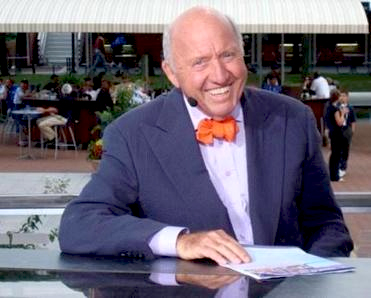New York, Mar 5: Bud Collins, a veteran television commentator and newspaper columnist known for his flamboyant trousers and tennis expertise, has died at age 86, his long-time newspaper the Boston Globe announced today.

"No media figure in history in my mind has ever been as important to one sport as Bud Collins was to the sport of tennis," said Mike Lupica, the New York Daily News sports columnist and ESPN commentator who followed the path Collins pioneered from the print ranks to TV fame.
"You can't minimize it. He became the de facto ambassador to that sport as it was exploding in this country. He educated. He entertained."
The self-described "scribbler and babbler" was known sartorially for bow ties and custom-tailored pants that feature bright, vivid colors and often wild designs and unique as the man who wore them as he spent more than half a century covering major tennis events.
His tailor, Charlie Davidson from Harvard Square, used swaths of cloth Collins brought from as far away as New Zealand, Bangkok and the Himalayas. One pair of pants was made from Vietnamese flags.
Collins had his first byline for the Globe in 1963 from Australia covering the Davis Cup. His last came in 2011, a story about Serena Williams from the US Open.
He covered Wimbledon 44 times, the first of them in 1968, making "Breakfast at Wimbledon" his realm during the years when the sport enjoyed its greatest US interest.
Collins was inducted into the International Tennis Hall of Fame in 1994.
Collins also wrote Globe travel stories that includes looks at such exotic locals as Cambodia, China, India, Italy, Nepal, Tanzania, and Tibet.





Comments
Add new comment